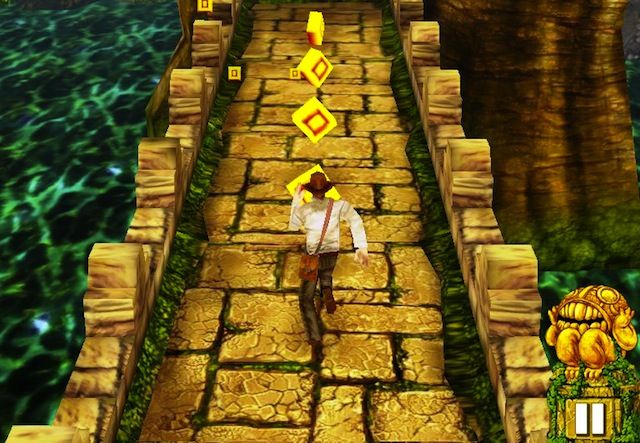Note: This article originally appeared in the Cult of Mac Newsstand issue, Game On!. Grab yourself a copy or subscribe today.
You’ve heard of them: the heavy hitters. The mobile games so big, so profitable and so frustratingly popular that you refuse to play them out of spite. Or you do play them, and you genuinely enjoy them, which is also totally fine.
But we’re all about self-improvement and actualization here, so here are a few alternatives you might consider instead of those gaming equivalents of high-school quarterbacks.
The Culprit: Temple Run
The Issue: Controls
Here’s the thing about controls: They have to work perfectly, every time. If I’m playing something on my PlayStation 3 and press the X button, but the game decides to do the thing that the Circle button does instead, that game has failed at controls.
Things get even riskier when you add touch to the situation. What’s the margin of error between horizontal and vertical gestures? Like, what’s the greatest slope a sloppy sideswipe can achieve before the iPhone goes, “Yeah, that’s totally going up”? I don’t know, but I’ve confused my phone enough times with my incomplete passes and haphazard direction that I suspect it’s started to mess up my inputs on purpose.
My point is that this is why games like Temple Run always frustrate me. I don’t know what I’m doing that causes my character to jump into an obstacle instead of scooting around it. And it’s too bad because I really wanted to like Temple Run, although I have no idea why. It’s probably peer pressure.
The Solution: Boson X
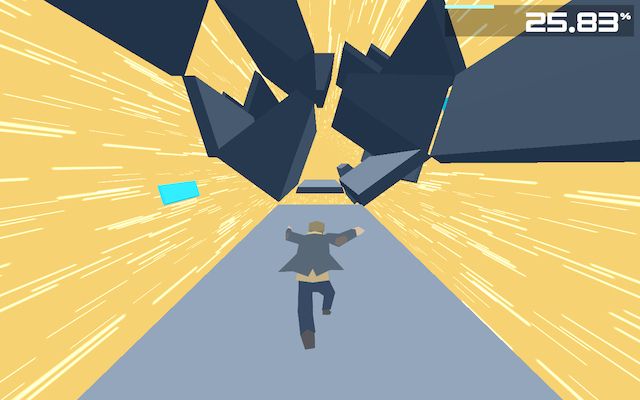
When I reviewed Boson X last month, one of the main things I pointed out was how it did away with the phone-confusing swipes in favor of more precise screen taps. So if you’re like me and can’t understand why your fingers and iPhone have so much trouble communicating, you might want to check out this scaled-down endless runner.
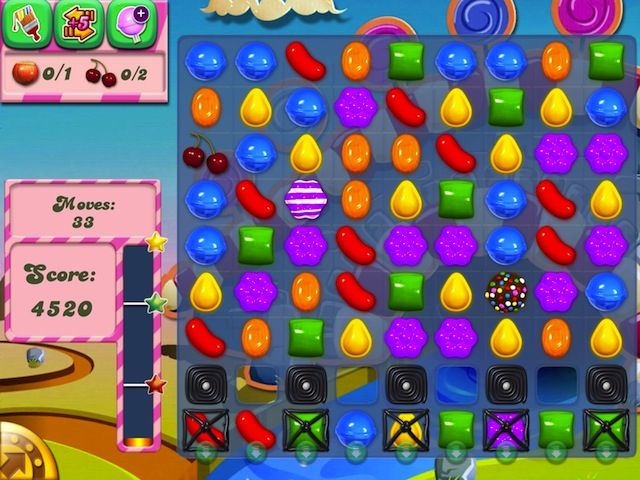
The Culprit: Candy Crush Saga
The Issue: Shallow, repetitive and boring
Alright, I know. Calling a Facebook game shallow and repetitive is like calling the endless notifications your friends send out about those games annoying. But it doesn’t change the fact that Candy Crush Saga is a match-three game that is basically like all other match-three games. You have a bunch of things and have to move the things around so that three of those things are in a row, and then they disappear, and then you can move more things.
Is it asking too much to ask for some context or substance? Yes, I realize how weird that sounds, but what’s in it for the parts of your brain that aren’t in charge of figuring out how to get three things in a row so they disappear? They’re withering away, people.
Plus, candy is bad for you. For shame, successful mobile-game developer King.
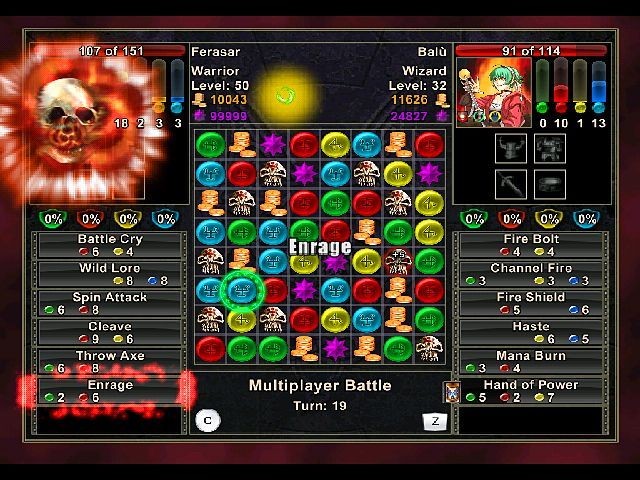
The Solution: Puzzle Quest
Now, if you want to match three things AND embark upon an epic quest of magic and intrigue, you’ll want to check out the Puzzle Quest series. They are role-playing games in which you travel across a mystical realm and fight monsters.
And you fight those monsters by matching three things on a board full of gems.
But wait: it’s actually cooler than that. The different-colored jewels each give you specific bonuses when you clear them. For example, blue gems refill your mana so you can cast spells, and skull-shaped gems damage your enemy. It introduces an interesting tactical element to the old formula. Do you attack now, or do you build up your mana to cast a more powerful spell next round?
Can arranging three starlight mints in a row kill a Cyclops? Of course not. Puzzle Quest.
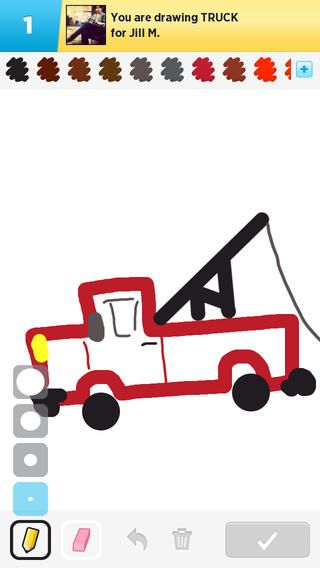 The Culprit: Draw Something
The Culprit: Draw Something
The Issue: Neither social nor cooperative
Draw Something isn’t nearly what it used to be, but when it came out last year, it seemed like everyone was playing it. If you aren’t among “everyone,” here’s how it works: One person chooses one of three objects and draws it and then their friend tries to guess what the drawing is. It’s like playing Pictionary without having to be at a lame party.
People were crazy about this game, but they missed its critical flaw: Despite being a game you could play with your friends, it contained no social interaction or any real need for cooperation. You’d be looking at a crappy drawing of a gorilla with your friend’s name on it, but the fact remained that for all the “fun” you two were having “together,” anyone in the world could have drawn that half-assed gorilla.
It’s also hard to think of a game for which the cost of losing is lower than this one’s. If the other person guesses correctly, you earn coins that you can use to unlock more colors to draw with terribly. If you lose, the next round starts. That’s it. Draw Something tries to trick you by including a “Winning streak” counter, but it really doesn’t mean or do anything.
The Solution: Spaceteam
Just look at this.
Do you see all those people in the same room working together to complete a task? Doesn’t that seem, I don’t know, pretty social? Don’t they all look happier than any Draw Something player you’ve ever seen in your life?
Spaceteam is a multiplayer extravaganza in which a team of players take the roles of a spaceship crew. Everyone has his or her own oddly named control panel on their screen, and the game displays adjustments that need adjusting. When the instructions appear, the player calls them out, and the person with the appropriate console flips the switch or turns the dial or whatever. Every once in a while, everyone has to shake or invert their devices to avoid imaginary wormholes.
Is there any part of that that doesn’t sound like a good time with your friends? Next to that, is there any part of Draw Something that does?

The Culprit: Angry Birds
The Issue: Wanton destruction
I actually enjoy Angry Birds a bit, but look at the premise: Birds become so overcome with rage that they are willing to launch themselves suicidally out of a giant crossbow to murder the pigs who stole their eggs.
Why all the revenge, birds? Have you never seen Get Carter (the good one) or attended a production of Hamlet? It never ends well. Unless maybe you saw Kill Bill or Death Wish. Those movies make revenge look completely awesome and consequence-free. Regardless, Angry Birds is a game that delights in violent destruction, and since we’re talking about being a better person, maybe let’s try something else.
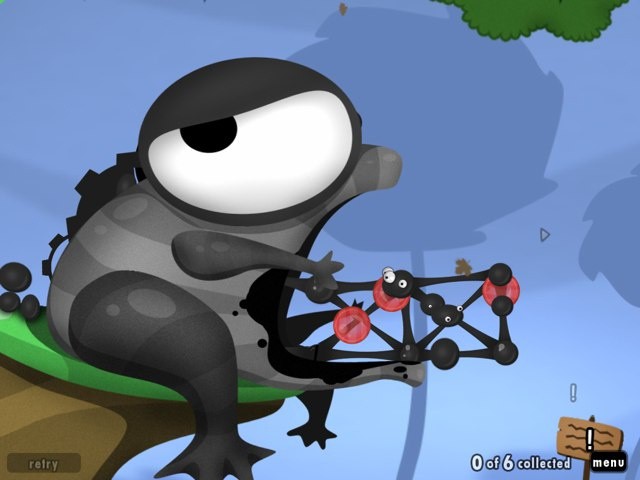
The Solution: World of Goo
As we know, the opposite of destruction is creation, and World of Goo is all about that. Players use goo balls (that’s a technical term) to build structures in order to get over obstacles to a goal. It’s kind of like that week in Shop Class when the teacher made everyone build a bridge and then hung weights on the bridges to show everyone how bad they were at building them, except World of Goo lets you just do your own thing, and either it works or it doesn’t.
I’ve seen some pretty clever shots in Angry Birds and I’ve seen some pretty amazing structures in World of Goo. The second group impressed me more because when it was all over, the player had something he or she could point to and say, “I made that.”
The best Angry Birds players can say about their crazy shots is, “I did that.” And that’s not usually as respectable.
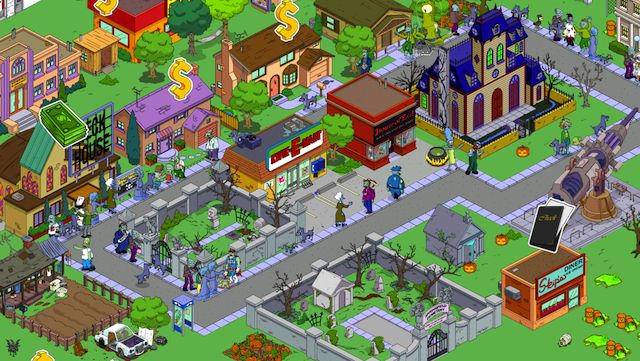
The Culprit: The Simpsons: Tapped Out
The Issue: Cynical and imagination-stifling
The Simpsons: Tapped Out presents players with an interesting scenario: What if the entire fictional town of Springfield were suddenly and unceremoniously wiped off the map? How would you rebuild it?
And then you start playing it and you find out: You’d rebuild it one building at a time and with massive delays in between. Tapped Out is one of those dreaded “freemium” games which attempts to extract money from players by refusing to let them play it. Restoring a building takes time, and players can run down the clock with an in-app purchase. Or they can wait or just delete the app like I did.
Even outside of that chicanery is the fact that what you’re really building is another person’s world. You might decide where the Kwik-E-Mart and the nuclear power plant go, but they’re still prefabricated pieces of an already existing world. So whatever your configuration, you’re building Springfield.
And if you’re going to start with a blank slate and build a world, why not make it your own?
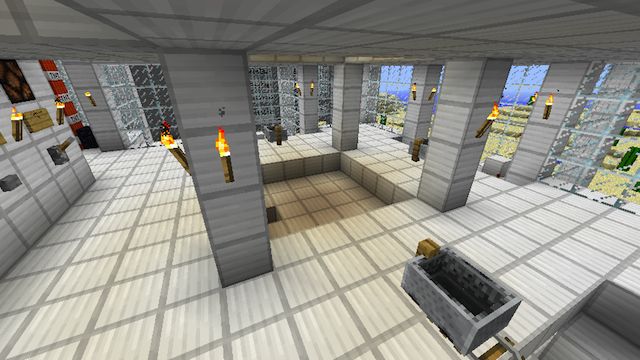
The Solution: Minecraft: Pocket Edition
Yeah, I mean, this is pretty obvious.
The biggest world-building game since Sim City is almost the exact opposite of Tapped Out‘s ready-made building blocks. It has blocks, sure, but what you build with them is up to you.
Minecraft in all its various incarnations is basically what I hoped the Lego tie-in games would be: “Here are some blocks, go make whatever you want. And also, look out for monsters.” Because you need monsters, you know.
While both games promote patience, the types they encourage are diametrically opposed. Tapped Out teaches the patience of refusal: “If you wait, you’ll get this.” Minecraft, on the other hand, gives you the patience of creation: “If you take your time and plan, you can make this world exactly how you want it to be.”
Which sounds better?
